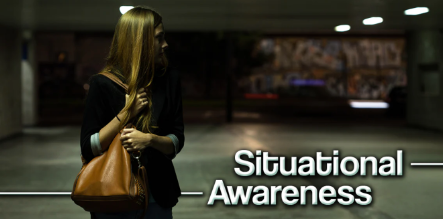
Situational awareness is a cognitive process that involves the ability to perceive, comprehend, and interpret information about one’s immediate environment. It encompasses the conscious awareness of relevant factors, events, and conditions that can impact an individual’s safety, decision-making, and overall understanding of a situation. By staying vigilant and attuned to their surroundings, individuals with heightened situational awareness can make informed choices and respond effectively to changing circumstances.
In its essence, situational awareness is about being present and observant in the moment. It requires individuals to actively gather and process information from various sources, including their senses, instruments, communication systems, and other available data. By assimilating this information, they can form a comprehensive mental picture of their surroundings and the dynamics at play.
The key components of situational awareness include:
- Perception: The ability to observe and gather relevant information through visual cues, sounds, and other sensory inputs.
- Comprehension: The capacity to understand and interpret the collected information, recognizing patterns, relationships, and potential implications.
- Projection: The capability to anticipate and predict future events or developments based on the current situation and the knowledge of how it may evolve.
- Decision-making: The process of using the gathered information and insights to make informed choices and take appropriate actions.
Perception is a crucial component of situational awareness. It involves the ability to accurately observe and interpret sensory inputs such as visual cues, sounds, smells, and physical sensations. Effective perception enables individuals to detect relevant details and anomalies that may have significance in a given context. For example, a pilot needs to be able to spot changes in altitude, airspeed, or engine sounds to maintain control of an aircraft.
Comprehension is the next step in situational awareness. It involves understanding and interpreting the collected information, recognizing patterns, relationships, and potential implications. This cognitive process allows individuals to make sense of the situation and extract meaning from the available data. By identifying connections and understanding the broader context, individuals can assess the significance of different elements within the situation.
Projection is another critical aspect of situational awareness. It involves the ability to anticipate and predict future events or developments based on the current situation and knowledge of how it may evolve. Projection enables individuals to envision potential outcomes and prepare for them accordingly. For instance, a chess player with strong situational awareness can anticipate their opponent’s moves and plan their strategy accordingly.
Decision-making is the practical application of situational awareness. It is the process of using the gathered information and insights to make informed choices and take appropriate actions. With a solid understanding of the situation, individuals can evaluate the available options and assess their potential consequences. Effective decision-making requires considering factors such as risks, constraints, priorities, and desired outcomes.
Situational awareness is particularly crucial in high-stakes environments, including aviation, military operations, emergency response, and law enforcement. In these fields, split-second decisions can have life or death consequences, and the ability to maintain situational awareness is paramount. Pilots need to monitor their instruments, scan the airspace for potential hazards, and stay alert to changes in weather conditions. Similarly, soldiers in combat must be aware of their surroundings, recognize threats, and adapt to rapidly changing circumstances.
However, situational awareness extends beyond specialized domains and is relevant in everyday life situations as well. Whether crossing a busy street, driving a car, or participating in a conversation, being aware of one’s surroundings and the dynamics at play can enhance personal safety and decision-making. It can help individuals avoid accidents, navigate through complex situations, and respond appropriately to social cues.
Developing situational awareness is a skill that can be honed through training and practice. It requires individuals to cultivate mindfulness, active observation, and information processing abilities. Techniques such as regularly scanning the environment, maintaining an open mind, asking critical questions, and seeking multiple perspectives can contribute to improved situational awareness.
In conclusion, situational awareness is a cognitive process that involves perceiving, comprehending, and interpreting information about one’s immediate environment. It empowers individuals to make informed choices and respond effectively to changing circumstances. By actively gathering and processing information, individuals can form a comprehensive mental picture of their surroundings, recognize patterns, anticipate future events, and make sound decisions. Situational awareness is a critical skill in various professional fields, as well as in everyday life.
Our recommendation in order for you to have better Situational Awareness is to read the book, “Left of Bang”, authored by Patrick Van Horn and Jason A. Riley. Left of Bang is the civilian version of the Marine Corps. Combat Hunter Program developed at the direction of former Marine Corps. General James Mattis. The goal of the program was to teach Marines to use and interpret their senses of gut feelings as potential warning signals, transforming potential prey into predators. Left of Bang is based on the Three Pillars of Survival: increased situational awareness early threat recognition, and developing a system for acting on those threats.

